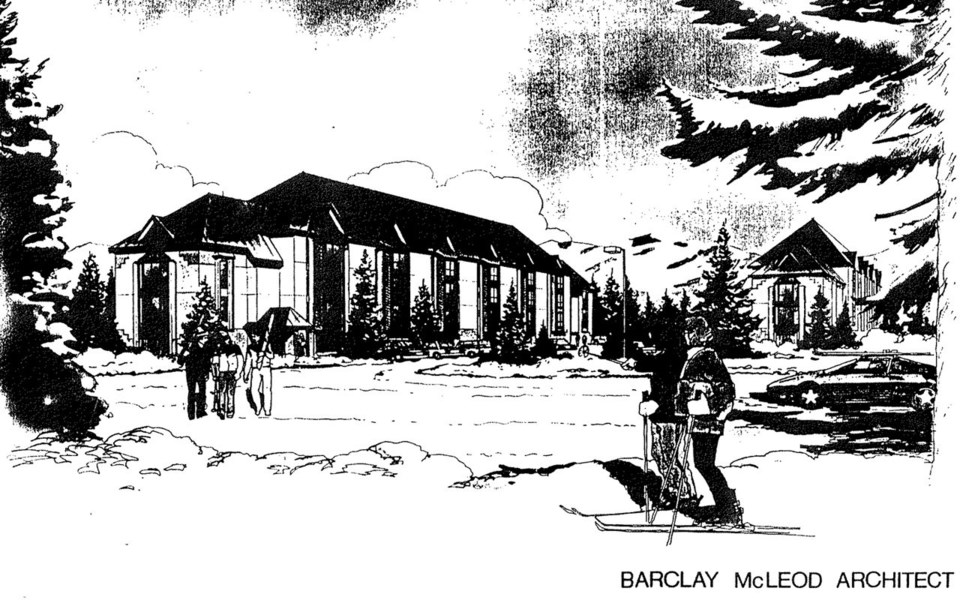Earlier this month, Whistler Blackcomb (WB) began a rezoning process with the goal of constructing a new six-storey building with 60 units of employee housing to join the seven existing staff housing buildings on the Glacier Lane site. Consisting of two-bedroom units, each about 40 square metres in size, this proposed housing will be very similar, if a bit newer than, the first four buildings originally built by Blackcomb Ski Enterprise and Canadian Pacific (CP) Hotels in 1988.
The first hint of the project came at the beginning of January 1988, when Blackcomb received permission to convert the administration offices of its old daylodge into temporary employee housing. To assuage concerns from council that the housing might not remain temporary, Gary Raymond, Blackcomb's vice-president of finance, mentioned that Blackcomb and CP Hotels, the owners of the then-under-construction Chateau Whistler Resort, would be bringing a joint proposal for permanent employee housing to council in the next few weeks.
The proposal was for four buildings, each with 48 two-bedroom units, to be built over two years. When finished the buildings would house almost 400 people; at the time, Blackcomb had roughly 500 employees and the Chateau was expected to employ about 350. Due to a severe shortage of housing, the plan was to construct all four buildings over the summer of 1988 in time for employees arriving in October.
The Blackcomb/CP Hotels Glacier Lane project was not the only employee housing project underway. That summer, projects with the Whistler Valley Housing Society (WVHS) were also being constructed or proposed at Nordic Court and Eva Lake Road.
All of these projects hit some snags over the summer, though the Glacier Lane project may have been the most visible. The buildings were higher and more visible than expected and "Letters to the Editor" were published in The Whistler Question referring to the construction as a "massive box" that could be seen from any point in the valley north of the village. In July, Mayor Drew Meredith even called the visibility of the project "a worthwhile mistake," while pointing out that the developers were trying to mitigate the visibility of the buildings through landscaping.
Before the buildings could officially open on Sept. 19, 1988, they first had to be named. A contest was announced in the Blabcomb newsletter and employees were invited to name both the development as a whole and the individual buildings. The contest was won by David Small, who proposed to call the development Glacier Park, with each building named for a glacier: Horstman, Overlord, Spearhead and Decker.
At the grand opening, Blackcomb president Hugh Smythe recalled his own years spent living in employee housing while working for Whistler Mountain, saying "I remember sleeping on the floor, on tables and in trailers," including one trailer known by many as "the ghetto." According to Smythe, the new units compared quite favourably to his own experiences, and certainly had a better view.
The first residents began moving in October 1. They were a mix of Blackcomb employees, including employees of Alta Lake Foods who provided food services for the mountain, and CP Hotel construction workers. Most of the CP Hotel employees would not move in until the Chateau Whistler Resort opened in late 1989.
By the end of November, the Blabcomb reported that all units had been filled, with people either already moved in or with rooms committed to incoming employees, and a waiting list had already been started. They were also able to report that, partly due to his work managing the housing project, Gary Raymond had been awarded one of the Whistler Chamber of Commerce's first "Business Person of the Year" awards, along with Lorne Borgal of Whistler Mountain. According to the Blabcomb, the project had been a great success.




